
Salinas is a more recently established village that date backs to the mid-20th century; the original village was called “Salinas Viejo” and is now abandoned, the residents forced to leave after a series of landslides.
The church is dedicated to Santa María Magdalena and the village celebrates a festival in honor of this patron saint on July 20th.
A visit to the ancient village of Salinas is a must for any self-respecting tourist, the ideal opportunity to experience the region’s varied landscape and rich heritage.
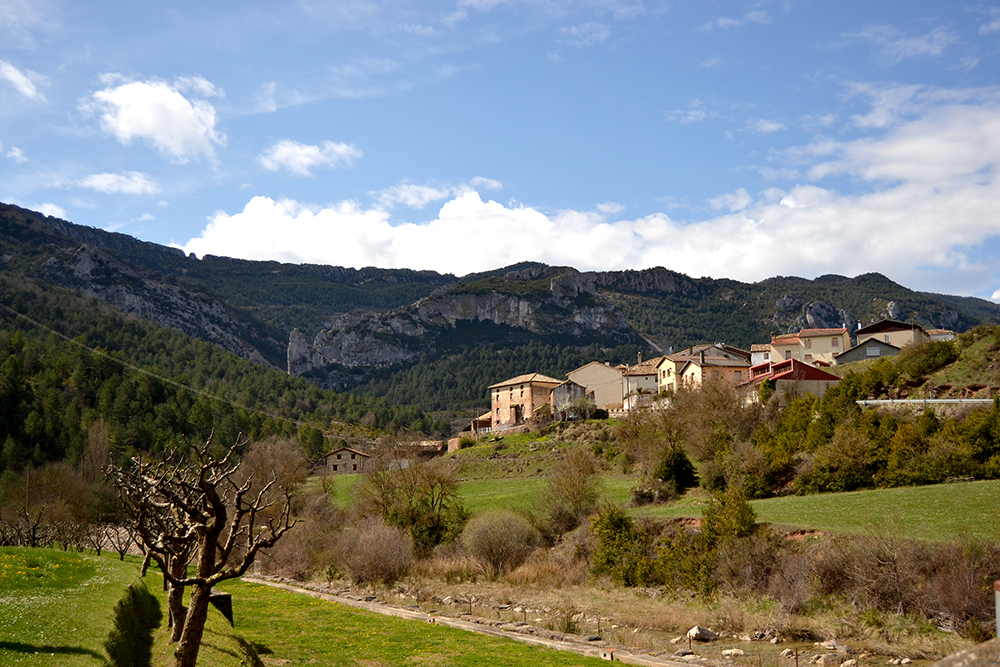
Located on a plain, nestled between slight rises in the land next to the Asabón River, Villalangua surprises visitors with its charm and location; secluded, surrounded by peace and calm.
The Parish Church of San Miguel is found at the center of the village.
Nearby, along the Asabón River, are the remains of the medieval village of Fañanás, a necropolis of slabs and the remains of the Chapel of San Urbez.
You can walk to the village of Agüero from Villalangua along a path of shifting landscapes, as well as to the Foz de Salinas, which provides unparalleled panoramic views.
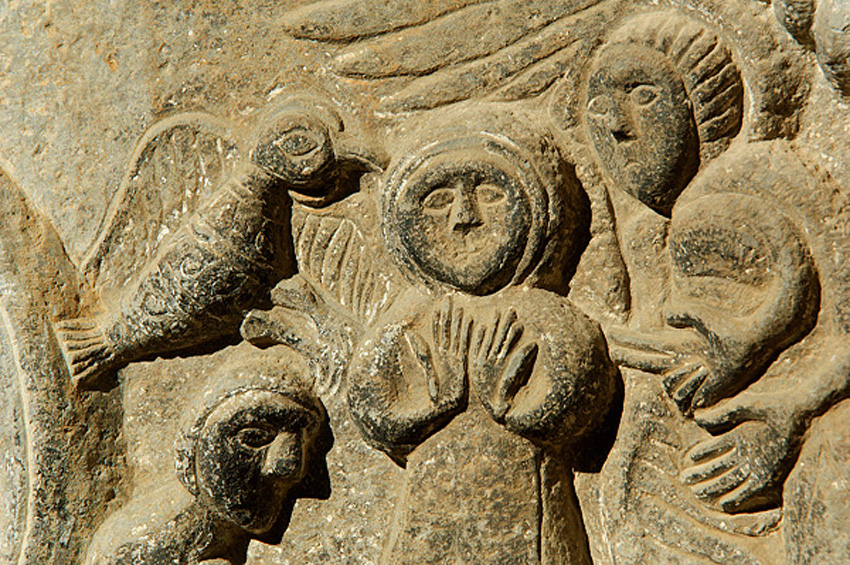
Located on the banks of the Peña reservoir, Yeste is a small hamlet that belongs to the municipality of Las Peñas de Riglos
The Parish Church of the Transfiguración del Señor houses a Romanesque baptismal font.
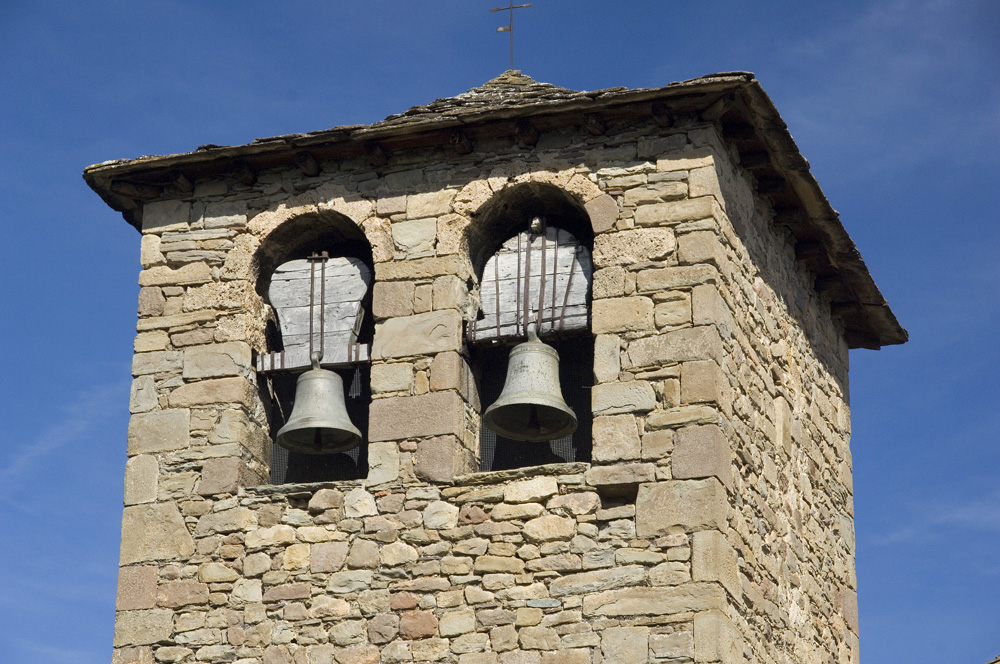
One of its major attractions is its former flour mill, now restored. Today it can be visited as part of an area with significant anthropological and ethnographic value.
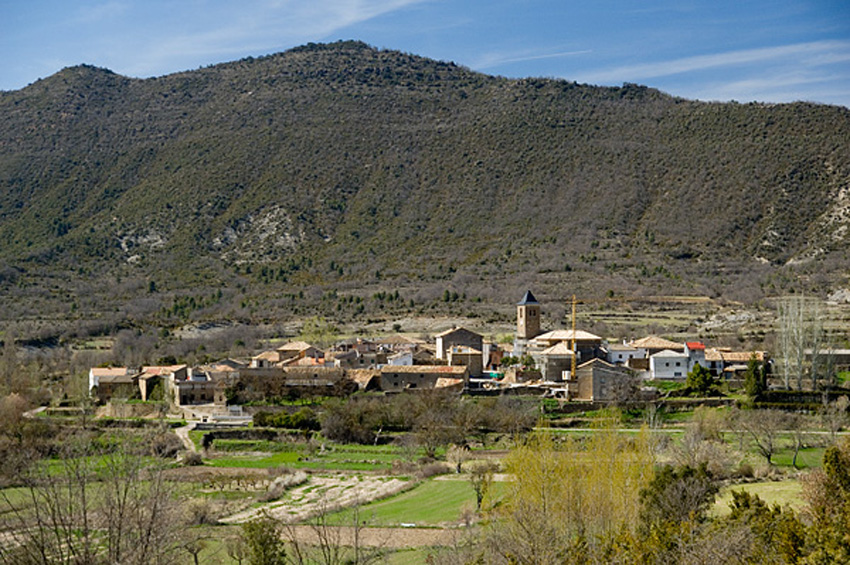
Rasal is located between the Javierre and Caballera mountains, above the valley through which the Garona River flows until it meets the Gállego River.
The hamlet features buildings with slate roofs and “chamineras”, or chimneys, truncated cones topped with an “espantabrujas”, a traditional way of protecting homes from evil spirits.
The 18th-century Parish Church of San Vicente safeguards a Romanesque carved seated Virgin Mora (12th century), which was originally located in the Chapel of the Virgen de los Rios, today in ruins.
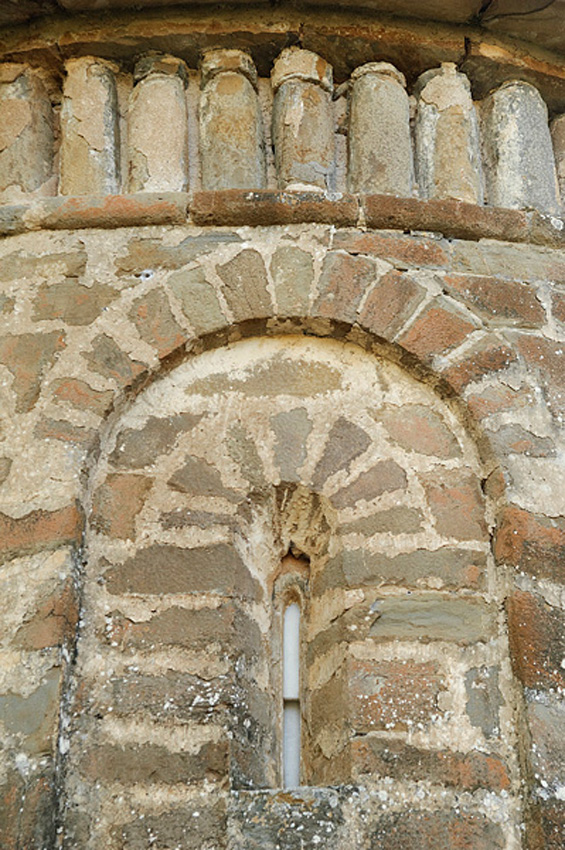
Visitors can also see the 11th-century Chapel of San Juan Bautista, designed in the Mozarabic style typical of the churches in the Serrablo region, as well as the covachos, or lodgings, once inhabited by the Moorish queen known as "La Morgana."